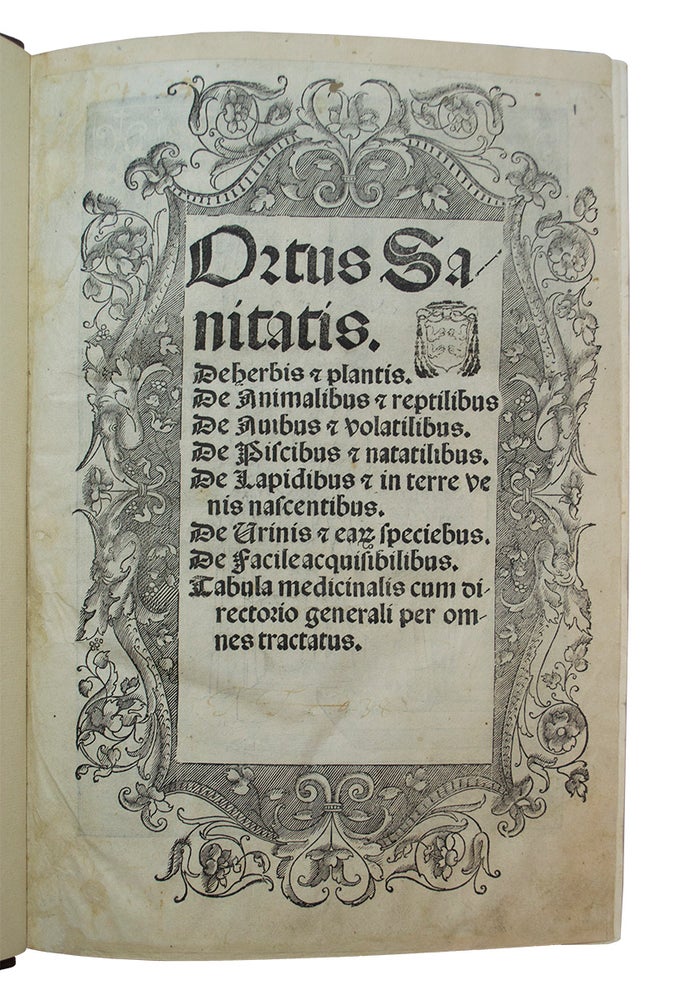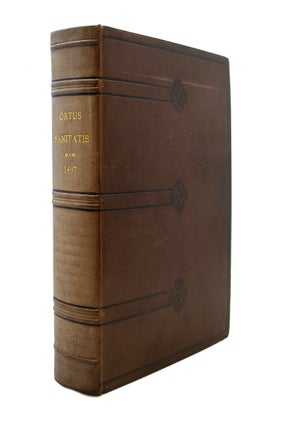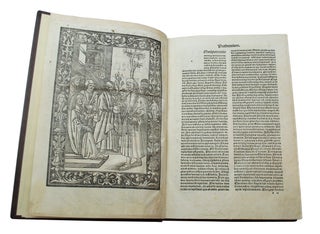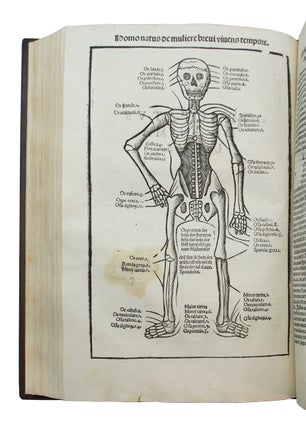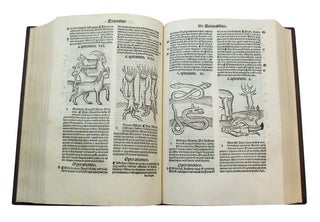The Fifth, Expanded Edition of the Latin Text, the First Printed in Italy, and the First Time "De Facile Acquisibilibus" is Added
De herbis et plantis, De Animalibus & reptilibus, De Avibus et volatilibus, De Piscibus & natatilibus, De Lapidibus & in terre venis nasce[tibus], De Urinis et eau speciebus, De facile acquisibilibus, Tabula medicinalis Cum directorio generali per omnes tractatus.
Venice: Bernardinus Benalius & Johannes de Tridino alias Tacuinus, 1511.
Venice: Bernardinus Benalius & Johannes de Tridino alias Tacuinus, 1511].
The fifth, expanded edition of the Latin text and the first edition printed in Italy. The tract De facile acquisibilibus is added for the first time as a supplement to the section De urinis. Folio (11 7/8 x 8 1/8 inches; 300 x 205 mm). With 367 (of 368) leaves, bound without the final blank which is common. Printed in double columns, with over 1000 column-width woodcuts within the text. Title page within an elaborate woodcut border and three full-page woodcuts. Two of which are of physicians, and the third is of a skeleton. The illustration cuts are reverse copies of those by Johann Prüss. from the c.1496 Strasbourg which were copies from the first edition printed in Mainz by Jacob Meydenbach in 1491.
Newer full calf. Boards stamped in black and blind. Spine lettered in gilt and incorrectly dated 1497. Title-page is slightly remargined from the top and bottom. A few leaves with some very minor worming, all to the edge of the bottom margin, not affecting text. Some light spotting to a few leaves. Overall a beautiful and clean copy.
In reference to an earlier edition "The full-page woodcut of the human skeleton appears here for the first time in an edition of the Herbals, and was added to nearly all the following Latin, French, and also to some German editions of the Hortus up to about 1540. This skeleton picture represents, from a graphic viewpoint, the best that was published of this kind before Vesalius" (Klebs, 46).
According to Mortimer, the title-page border with dolphin motif was divided between Benalius's and Tacuinus's shops, the former setting thirty of the quires, and the latter twenty-eight. The fine four-part title-page border with dolphins was part of Tacuinus's stock, first used by him a few months earlier for his edition of Vitruvius...."it was one of the most influential pieces of [book] ornamentation of the sixteenth century", being copied in several formats by many other Renaissance printers. (Mortimer Italian 238).
In reference to an earlier edition, this early encyclopedia of mediaeval science, Hortus Sanitatis, "The Garden of Health," is the "third and most extensive of the fundamental botanical compilations which are generally now called herbals. The first was the Herbarius of 1484, and the second was the enlargement called Gart der Gesundheit. The third form, though based in part on the Gart der Gesundheit, was almost entirely rewritten and elaborated upon, especially in the parts on animals, birds, fishes, stones and minerals, and in the treatise on urines; the text on herbs too is quite different, each chapter beginning with a description of the plant, its synonyms, and often something about its geographical origin, and ending with a list of the plant's medicinal virtues in a separate section headed "Operationes" (Hunt, p. 12). Adams H-1016. Essling 1723. Hunt 12. Nissen, BBI, 2368. Sander 3470. Mortimer Italian 238.
HBS 68695.
$25,000.
Price: $25,000.00
Item #68695

